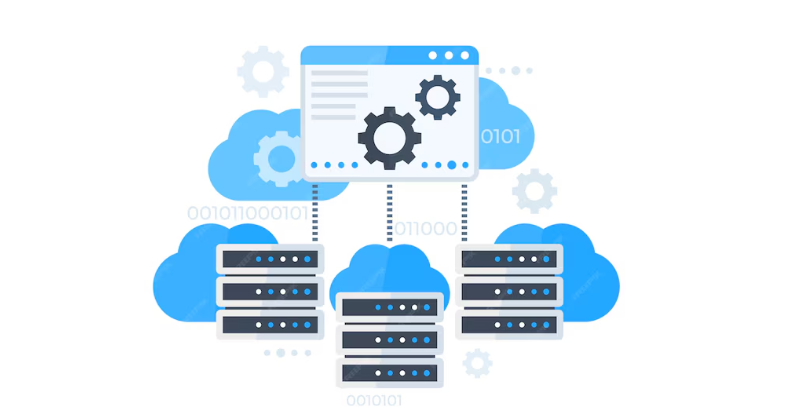The process of tailoring a web or mobile application to the language and culture of users in a target market is known as software localization. Find out more about what is software localization, and why is it important?
Localization has become essential for delivering a smooth user experience (UX) across linguistic and cultural barriers as people all over the world rely more and more on software in their daily lives.
The biggest tech companies in the world are well aware of this: customers can rely on services like Spotify, Uber, and Airbnb in their local tongues and take advantage of a carefully tailored user experience, no matter where they are in the world.
Software localization is the term for this adaption process, which calls for a comprehensive plan that addresses everything from strategy and implementation to the use of appropriate technology.
What Is Software Localization?
In software development, software localization is the process of tailoring a web or mobile application to the language and culture of consumers in a target market.
A crucial first step in international expansion is tailoring software to local needs, which can make the difference between a software company that succeeds in a highly competitive worldwide market and software that finds it difficult to draw in users from other countries.
You must first prepare your program for localization (internationalization) before you can take it global (globalization).
Stated differently, the product—its source code, user interface (UI), and other elements—is initially prepared to facilitate future cultural and linguistic adaptation.
The real software localization procedure, which involves translation, comes next.
You can test and implement your software in several marketplaces after customizing it for a particular location, which is a collection of language- or country-based preferences for a user interface.
Localization occurs concurrently with software development cycles in a contemporary agile setting. This implies that translators interact with content as soon as developers release it, rather than incorporating a completely different localization procedure into the current software development process.
What Are The Benefits Of Software Localization?
In today’s cutthroat global software industry, software localization is essential for any digital product’s worldwide expansion and long-term growth. Although it may appear expensive at first, the return on investment (ROI) from localization can be significant.
Let’s examine the main advantages of software localization in more detail:
A Larger User Base
The majority of internet users speak languages other than English, even though the bulk of web pages are in English. Here’s a fact: non-English markets accounted for nine out of the top ten app download markets in 2022. You may greatly increase your chances of drawing in and converting more users by adding those target markets to your expansion agenda.
The ability of users to comprehend and interact with your software product is ultimately a major determinant of their choice to buy. Software that accommodates the language and cultural preferences of the market has a higher chance of gaining customers and improving conversion rates.
Faster Time To Market
When you have a continuous workflow in place and use automatic translation from the start, well-executed software localization can help you enter new markets more quickly.
Similar to agile development, localization teams, and developers work together in iterative processes from the beginning in agile localization. A subset of agile called continuous localization goes one step further by guaranteeing that content is always prepared for publication. Software release cycles are shortened when developers and translators work together harmoniously since translation no longer interferes with the process.
In the long term, this allows you to localize software at scale and release it for several markets concurrently. You have a better chance of taking advantage of market possibilities quickly if you act quickly. Thinking of what is software localization, and why is it important the best advantage is it takes a few times to do the market.
Stronger Brand Awareness
Gaining new consumers starts with increasing brand recognition, which can be difficult to do without localization when you’re targeting global audiences. Increased brand value and lower advertising costs are two benefits of having a well-known brand, which increases the attraction of your goods to prospective buyers around the globe.
Gaining access to symbolic capital through status is another factor in entering a new market. Symbolic capital is associated with recognition and status. Symbolic capital allows you to integrate into the local culture, offers you access to influential people, and ultimately makes it easier to market your product.
Enhanced Customer Loyalty
Cultural affinity is frequently the foundation of brand loyalty. To put it another way, consumers adore it when brands communicate with them in their mother tongue. If given the option, even non-native speakers who are proficient in English prefer content in their mother tongue.
This demonstrates that localized software serves as a means of respecting local clients in addition to facilitating information access. In the end, trust is what makes sales possible, and excellent localization supports long-term relationships with clients while retaining attention and fostering loyalty.
Increased Revenue
All of the aforementioned elements work together to increase your revenue in the end. On the one hand, your potential revenue increases with the size of your clientele.
Conversely, offering a customized and localized user experience at every stage of the customer journey—from pre-purchase to post-purchase assistance and beyond—reduces attrition, boosts repeat business, and promotes positive word-of-mouth. Each of these factors affects the bottom line and helps to increase revenue and sales.
In Conclusion
The multifaceted process of software localization includes modifying the original material to make sure it appeals to local users while taking into account cultural quirks, traditions, or allusions that might not be known to those outside of a particular area. Get the ideas of what is software localization, and why is it important? Significant content changes may occasionally be necessary for localization in order to make the information pertinent to the target market.




